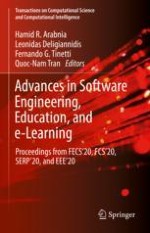2021 | OriginalPaper | Buchkapitel
Random Self-modifiable Computation
verfasst von : Michael Stephen Fiske
Erschienen in: Advances in Software Engineering, Education, and e-Learning
Aktivieren Sie unsere intelligente Suche, um passende Fachinhalte oder Patente zu finden.
Wählen Sie Textabschnitte aus um mit Künstlicher Intelligenz passenden Patente zu finden. powered by
Markieren Sie Textabschnitte, um KI-gestützt weitere passende Inhalte zu finden. powered by
